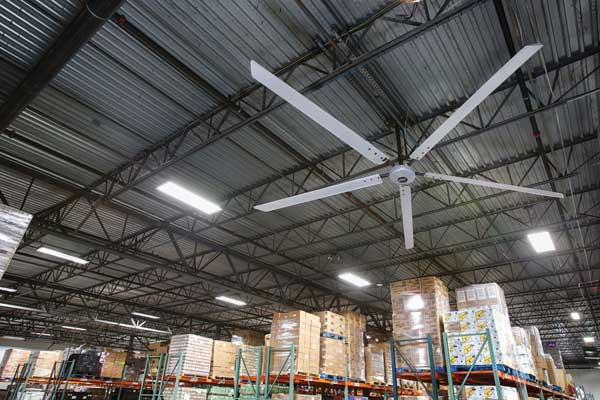HVLS Fans in the Winter

by Mark D'Agostino
One of the biggest myths for industrial ceiling fans is that they are only needed when the outside temperatures are hot. Granted, they are an incredible benefit to have in the summer. However, there are many other advantages to HVLS (high-volume, low-speed) fans in cool temperatures as well.
What are HVLS Fans?
If you’re not familiar with HVLS fans, they are large industrial ceiling fans used in plants, facilities, manufacturing centers, distribution centers and other large spaces. Ranging in diameters from seven to 24 feet, the fans move large volumes of air with minimized energy consumption per square foot.
HVLS fans can work with your HVAC system to better control the climate of your workspace. The fans can mobilize and “de-stratify” large volumes of air, enabling HVAC systems to operate more efficiently while optimizing comfort and health in unconditioned environments.
Winter Benefits
According to the Commercial Buildings Energy Consumption Survey (eia.gov/consumption/commercial/), heating costs account for more than 35 percent of a building’s annual energy consumption.
One of the most significant benefits of having HVLS fans in the winter is the potential to save up to 30 percent on energy bills.
Hot air naturally rises (a term we call stratification) to your facility’s highest point, but your thermostat is located at the occupant level. Therefore, the HVAC unit will continue to work to reach the desired temperature at the occupant level. This inefficient process will continue overheating the ceiling, thus overworking equipment and adding to operating costs.
Air destratification with an HVLS fan recirculates the warm air trapped at the ceiling level down to the ground floor. It creates a productive work environment that can result in lower heating costs.
One of our customers reported that after installing an HVLS fan, they saw their energy bill reduced by nearly 50 percent annually compared to before the fan was installed.
In the winter, operate your HVLS fans at a lower speed. Just like setting your clock backward, you should also change the direction of your fan. By reversing the fan’s direction you’re able to help destratify the air without creating a draft. Some HVLS fan companies allow you to reverse the operation of the fans in colder months with a simple push of a button on a wall control.
 Mark D’Agostino is senior vice president and general manager of Hunter Industrial. Learn more at www.hunterfan.com.
Mark D’Agostino is senior vice president and general manager of Hunter Industrial. Learn more at www.hunterfan.com.
This article originally appeared in the Jan./Feb. 20201 issue of Industrial Supply magazine. Copyright 2021, Direct Business Media.











